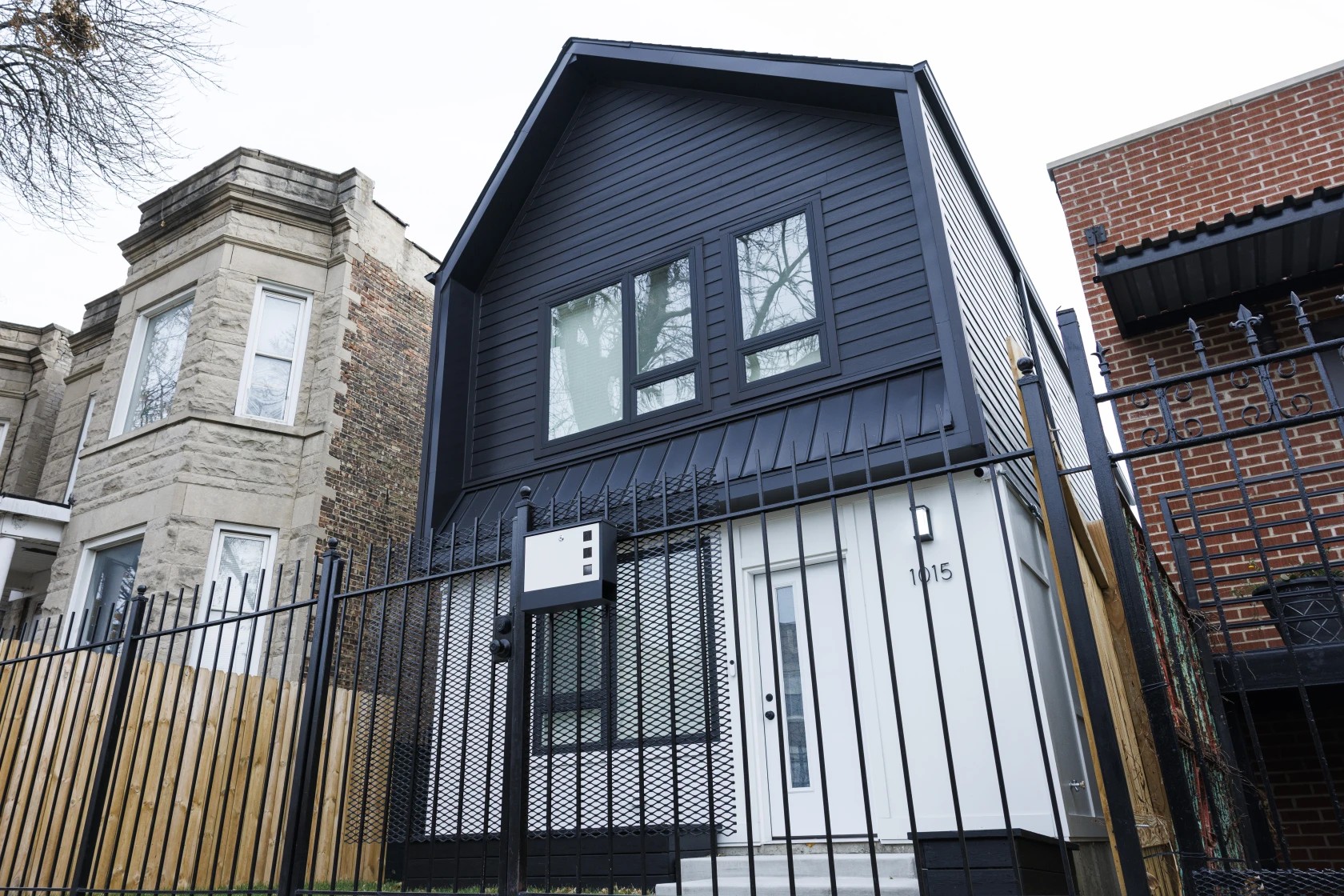What Would A Thriving Madison Street And Pulaski Road Look Like? West Side Groups Launch Plan To Revitalize Corridors

Read the full article in Block Club Chicago.
WEST GARFIELD PARK — West Side groups are launching a plan to revitalize two major commercial corridors and bring back critical resources to West Garfield Park help residents live longer, healthier lives.
The project, called the West Garfield Park Corridors Plan, aims to be a community-driven blueprint to overhaul the economic engines of the neighborhood: Madison Street and Pulaski Road. The plan is in the early stages, but it could involve strategies to combat food scarcity, healthcare deserts, educational gaps and crime.
The Madison and Pulaski plan is a central component of the Garfield Park Wellness Collaborative, a coalition of West Side groups dedicated to ending health disparities by building “an ecosystem that allows for folks to be fiscally, physically and mentally healthy,” Executive Director TJ Crawford said.
Partners include Bethel New Life, Rush University Medical Center, New Mount Pilgrim Church, the Garfield Park Community Council, West Side United, Community Builders and Habilitative Systems, Inc.
The project’s organizers will work with West Garfield Park residents and groups to identify the assets and amenities needed in the neighborhood. Better-equipped commercial strips would chip away at the social inequities — like income and access to medical care — that have resulted in poorer health for West Siders, Crawford said.
“Healthy environments will produce healthy people living in those environments,” Crawford said.
West Garfield Park residents are expected to live an average of 69 years — a lifespan shorter than any other West Side neighborhood, according to a 2015 Virginia Commonwealth University report. Residents of the Loop are expected to live 16 years longer, to an average age of 85.
The collaborative is identifying an urban planning team to guide the corridor-planning process, which will be driven by community participation, said Kemena Brooks, a project manager with Community Builders.
Organizers have conducted ongoing surveys and town halls as part of the group’s Rite to Wellness health outreach campaign to gather preliminary feedback from residents, Brooks said.
Residents who are already engaged in the early planning process have said they want the Madison and Pulaski corridors to feel safer and more walkable, Brooks said. Neighbors also suggested beautifying the streetscape, cleaning up dilapidated buildings and vacant lots and improving existing storefronts, Brooks said.
The corridors plan is expected to be completed within nine months.
“The planning effort will highlight what currently exists in the community and what are gaps,” Brooks said. “Is there enough access to fresh food? Is there enough access to health services? … How do we start to fill in the gaps in services, in programs, in buildings that don’t exist there?”
Access to medical care alone doesn’t account for the massive death gap, said Dr. David Ansell, senior vice president for equity at Rush University Medical Center and author of “The Death Gap: How Inequality Kills.”
At the core of the “death gap” is an extensive history of policy rooted in white supremacy that has drained Black and Latino neighborhoods of social, political and economic capital, Ansell said.
“These are not just historic processes. These are ongoing processes,” Ansell said. “Capital has been removed from these neighborhoods for a very long time. … Part of our work is to replace the capital that has been stolen.”
Legacies of disinvestment, redlining and few opportunities to build generational wealth have resulted in concentrated poverty and very little upward mobility in many Black neighborhoods, Ansell said.
These communities are now burdened with conditions that lead to poor health and shorter lifespans, like food scarcity, unemployment, pharmacy deserts, crime and underfunded schools.
“We’re seeing in areas where jobs have left, capital has left, that life expectancy drops. So without good jobs that pay well, without education, people can’t thrive,” Ansell said. “We’ve got to move the opportunity to where the people are.”
Residents can get involved in the planning efforts by participating in the survey on the Garfield Park Wellness Collaborative’s website or signing up for their newsletter.
Pascal Sabino is a Report for America corps member covering Austin, North Lawndale and Garfield Park for Block Club Chicago.



